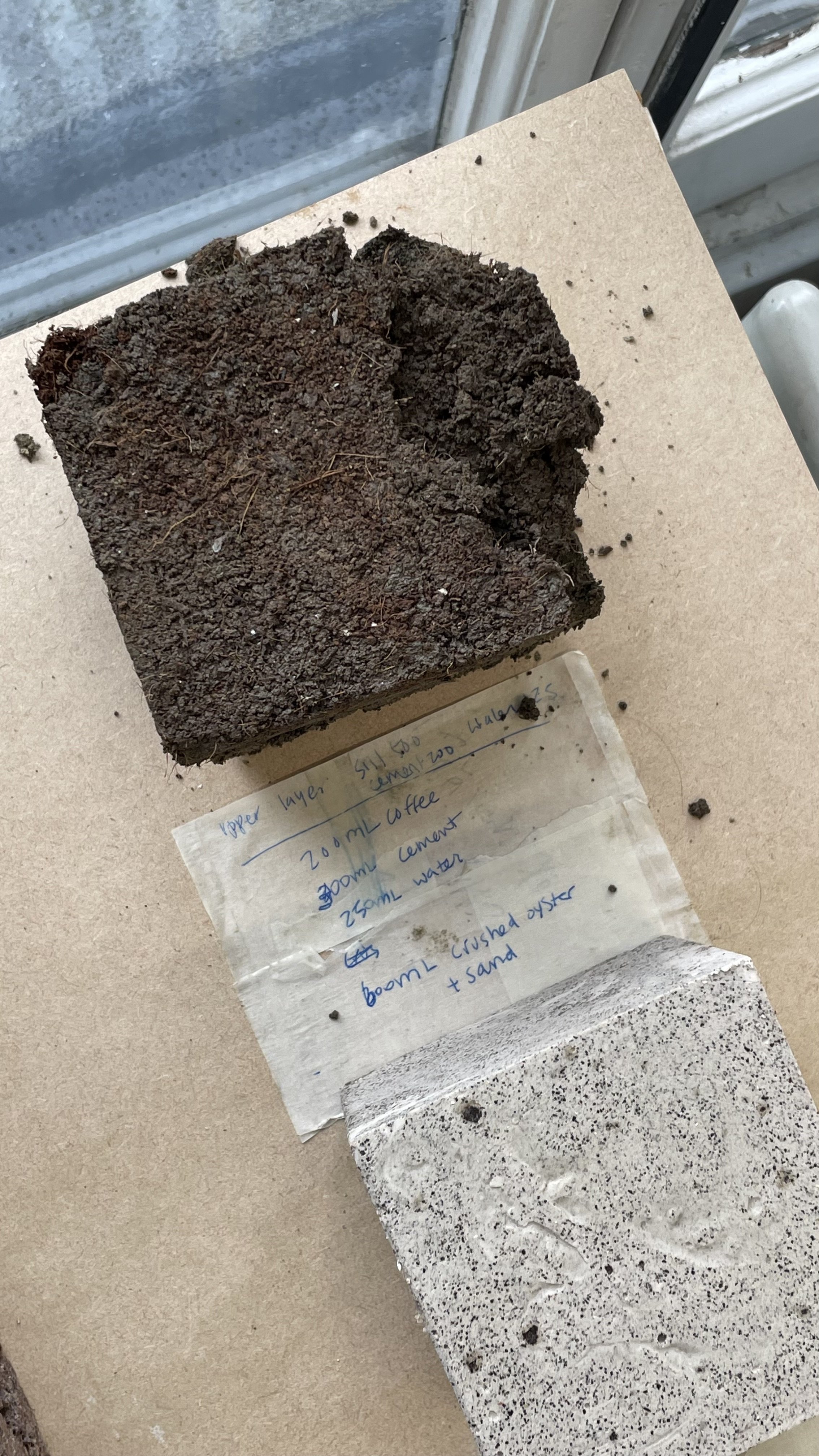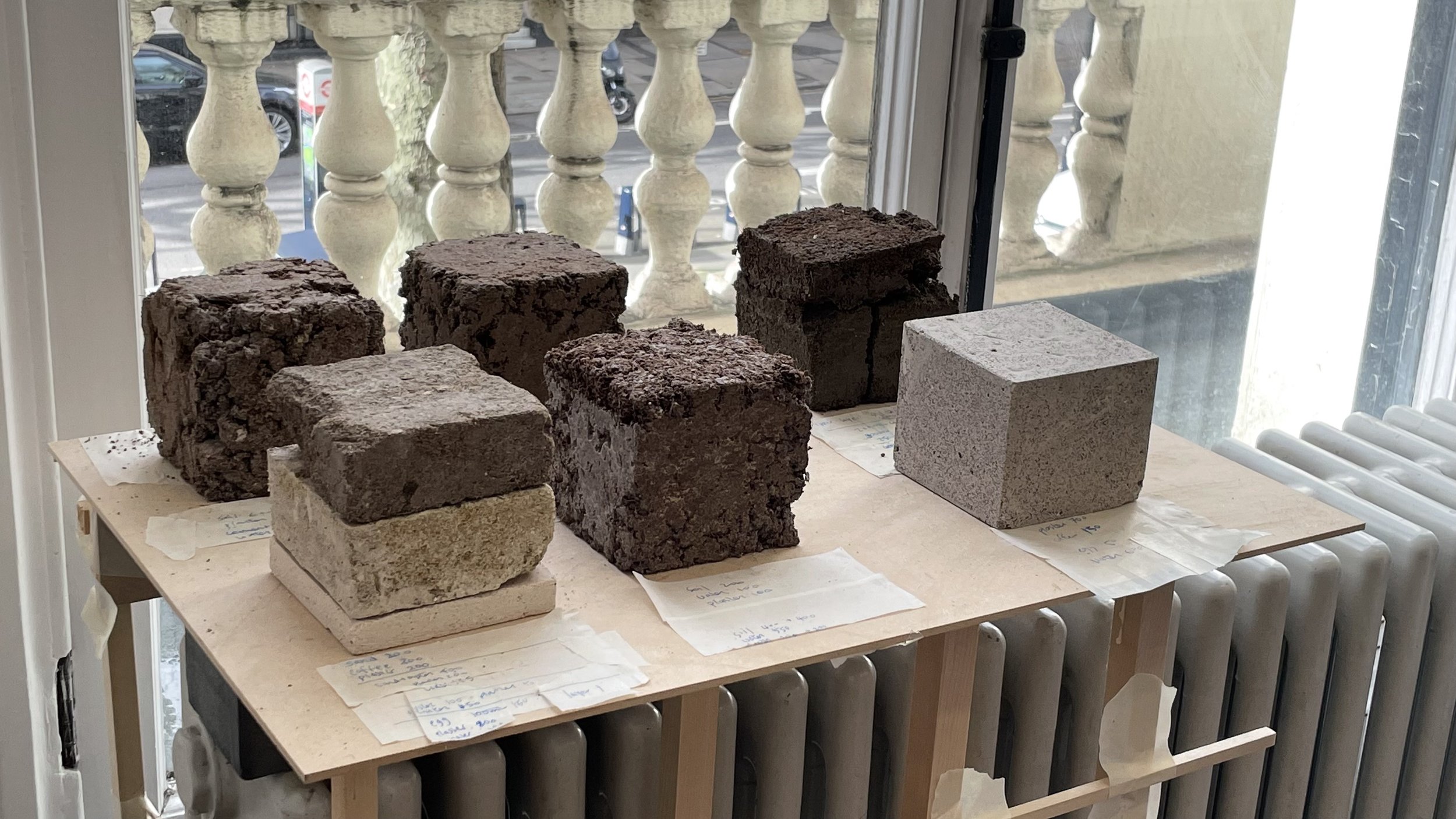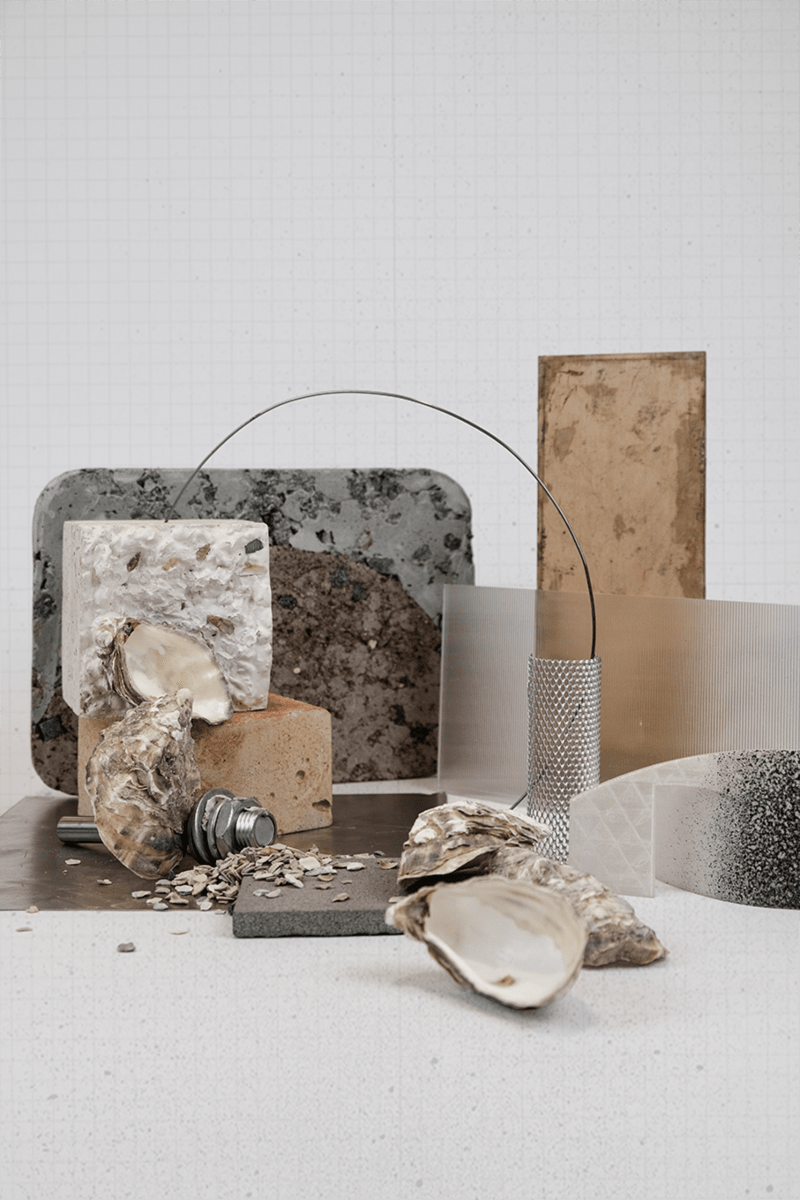The project incorporated soil, oyster shells, and industrial objects. Various textures were achieved by mixing earth with oyster shell-based fly ash and lime. Oyster shells were also transformed into new furniture and fittings. The design of the space was influenced by the site's characteristics, resulting in distinct atmospheres and a transition from light to dark.
Se(a)sequel
Waste Age: What can design do?
August 25, 2022
Spatial
Connetion : +42146
Shares : 2723
Chaerim Shin's fascination with waste started when she visited waste-age, V&A and observed how much was being wasted, unused, and decaying in a landfill. Yet it was salvageable.
She was interested to discover what could be reused to become a new material for interiors. As a result, the project setting provided me with soil, oyster shells and various discarded industrial objects.
The soil is mixed with fly ash and lime from oyster shells. Adjusting the proportions allowed the tactility to move from fine to coarse, offering a wide range of material qualities within the space. More delicate finishes allowed a subtle play of light and colour and coarse speaks of nature and rawness.
Oyster shells are reprocessed within Sequel in its circular system to create new furniture and fittings. The space is designed in response to the character of the site. Two railway arches with little direct natural light led me to create a space with split atmospheres and experiences.
The transition from light to dark is echoed in the facade. A dramatic sculptural gesture that unites the two arches into one and celebrates soil as valuable. The three lights symbolise Se(a) sequel's three design strategies that speak of circular economy through material reuse, reprocessing and reproduction.
Chaerim Shin 的設計作品是當她參觀 V&A Waste Age 廢物時代並觀察有多少被浪費、未使用並最終在垃圾填埋場腐爛時,開始了對廢物的迷戀。然而覺得是可以挽救的。
“廢物是一個將自然和文化交織在一起的網,它可能是我們這個時代的決定性材料。” - Waste Age: What can design do?。
Chaerim 想知道什麼可以重複使用,成為一種新的室內材料。於是利用項目環境提供了土壤、牡蠣殼和一系列廢棄的工業物品為開始。
在她的室內設計中,土壤中混有粉煤灰和牡蠣殼中的石灰,調整比例使觸感從精細到粗糙,在空間內提供了廣泛的材料品質,更精細的飾面允許微妙的光線和色彩發揮,粗略地講述自然和原始。牡蠣殼在 Seaquel 自己的循環系統中進行再加工,以創造新的家具和配件。空間的設計是為了響應場地的特點。兩個幾乎沒有直接自然光的鐵路拱門,創造了一個具有分裂氛圍和體驗的空間。
明暗的過渡在立面上呼應。一種戲劇性的雕塑姿態,將兩個拱門合二為一,並頌揚土壤的價值。三盞燈象徵著 Se(a)sequel 的三種設計策略,通過材料再利用、再加工和再生產來講述循環經濟。
Chaerim Shin
Chaerim Shin is a South Korean Interior Designer based in London. Her discipline as a designer started in 2012 after her degree in BFA Interior Designer at the School of Visual Arts in New York, USA, with interest and practice across furniture, architecture and arts. She graduated from the Royal College of Arts with a Masters's Degree in Interior Design.
Her design cares about senses in design, how we see, touch, depth of the meanings behind them. She believes the basic things we care for are the most important details to be carefully thought through and developed.
She chose the Matter platform at RCA to study a wider range of sustainable materials which could guide our world to a healthier environment.
Chaerim Shin是一位來自韓國的室內設計師,目前定居於倫敦。她於2012年在美國紐約視覺藝術學院獲得室內設計學士學位後開始了她的設計師生涯,對家具、建築和藝術領域充滿了濃厚的興趣和實踐經驗。她之後在皇家藝術學院攻讀並獲得了室內設計碩士學位。
Chaerim Shin的設計關注於感官體驗,探索我們如何以及為何對設計做出視覺和触覺上的反應。她認為,對於我們所關心的基本事物,最重要的細節需要經過仔細的考慮和發展。
為了研究更廣泛的可持續材料,這些材料可以引導我們的世界走向更健康的環境,她選擇了皇家藝術學院的Matter平台。
Website: https://chaerimshin.com/
for questions or inquiries, please contact her at
chaerim1207@gmail.com or chaerim.shin@network.rca.ac.uk


















